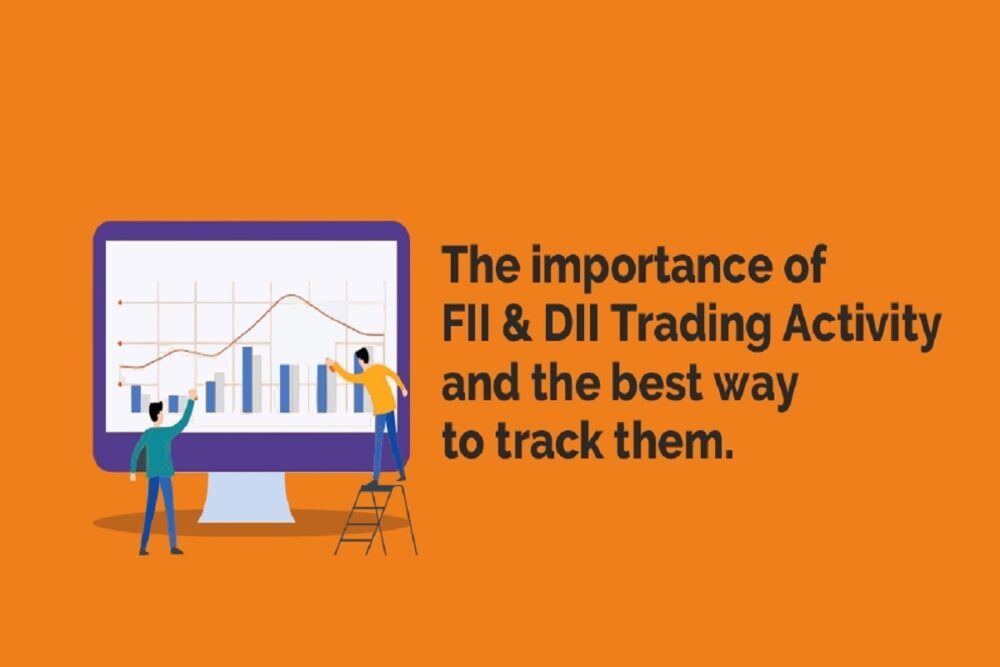Did you know that in February 2022, Foreign Institutional Investors (FIIs) made a gross purchase of more than ₹136,000 Crores and gross sales of more than ₹181,000 Crores in the Indian stock market?
In the same month, Domestic Institutional Investors (DIIs) made a gross purchase of more than ₹145,000 Crores and gross sales of more than ₹103,000 Crores in the same market.
That’s a lot of money, isn’t it? Can you imagine how such huge amounts of money can affect the markets? And how it can impact your portfolio?
It is imperative to have a detailed understanding of FIIs and DIIs and more importantly know how to track their activities to make the best use of the opportunities that arise from FII & DII trading activity.
Who are FIIs and DIIs?
An integral part of India’s stock market, Institutional investors pump in large sums of money into the market, which in turn, drives the market. Institutional investors can mainly be categorized into two types:
Foreign institutional investors (FIIs): These are foreign companies who are allowed to invest in the Indian markets. By construct, FIIs are incorporated in countries outside India. These companies can be hedge funds, pension funds, insurance companies, investment banks, and mutual funds. Europacific Growth Fund, Oppenheimer Holdings (an American investment bank), Abu Dhabi Investment Authority are some of the largest FIIs investing in India.
Domestic institutional investors (DIIs): DIIs are large companies that are incorporated in India that can trade in the Indian stock market. Domestic mutual funds, investment banks, insurance banks, pension funds, hedge funds, and others are considered as DIIs. LIC, Nippon AMC, HDFC Life are some of the significant DIIs investing in the stock market.
The importance of FIIs and DIIs
The Indian stock market is primarily driven by institutional money. Why? Because they can invest large sums of funds, which is otherwise unaffordable by retail investors. FIIs and DIIs are responsible for the bulk of liquidity in the market. Hence, tracking these inflows and outflows can help predict market trends.
For years, FIIs used to account for the bulk of the investments into the Indian stock markets. However, over the last few years, the trend has changed and DIIs are investing more funds than FIIs. This is a great indicator that the Indian stock market is making a mark on the global platform.
But the importance of FII DII activity does not stop at liquidity and cash inflows.
FII investment in the Indian market signals their high confidence in the country’s financial sector. This improves the length and breadth of the market. These funds are usually invested for the long term, and in turn, help the economic growth of the country. However, it is important to remember that FII investment does not necessarily need to affect the market positively. They can have a negative impact as well. FII buy-sell data can be a source of speculation since it is followed by everyone, even the DIIs.
DIIs, on the other hand, is considered to be the stabilizer of the economy because they understand the pulse of the market better. Moreover, since these are domestic companies, they can invest and redeem more swiftly.
Together, FII and DII activities sometimes set the trend of the Indian markets. Retail investors track where and how they are investing and try to analyze their confidence in certain sectors or companies.
Why should you track FII & DII trading activity?
You must be thinking about what’s in it for you. Right?
Well, as a retail investor, it is important to track FII DII data. Retail investors do not have the financial power to move the markets. However, following those who do, can prove to be very beneficial. Tracking which companies they are investing in and which companies they are moving out of can be a good indicator of what is good and what is not. If they are gradually increasing their investment in a certain company, it means they have confidence in it. It will be a good idea to take exposure in that stock.
FII DIIs have a strong analytical team. Hence, their actions are backed by strong recommendations from this team. They can identify fundamentally strong companies, which, as a layman, we may not. Hence, keeping a track of FII buy-sell data can be of extreme value.
How to track FII DII data?
Now comes the golden question – how to track this data?
It is physically impossible for a person to track when and where FIIs and DIIs are investing. Using software that provides such kind of data can be very useful. Fortunately, today, several such software are available on the web and through a mobile app. One of the most functional among them is StockEdge – a premium stock market app of India.
StockEdge provides a wide range of data on FII DII activities filtered day-wise, clearing member-wise, and in the derivatives segment.
Day-wise: For each day, the app provides FII and DII activities in clearing members, index and stock futures, and index and stock options.
CM Provisional: Here you can check the net buy and sell data day-wise. Data is available separately for FII and DII and sorted based on various time parameters – daily, monthly and yearly parameters.
CM SEBI: This section provides the net buy and sell data of clearing members of SEBI as per various time parameters – daily, monthly, and yearly.
Derivatives: Data is available on FII DII activity in various derivatives segments – index futures, index options, stock futures, and stock options.
These data can help you understand the overall activities of FIIs and DIIs in the country and estimate their sentiment regarding our country.
When it comes to the stock market, StockEdge is literally your friend in need. Check it out today to see how it can help you in your trading and investing journey.








































